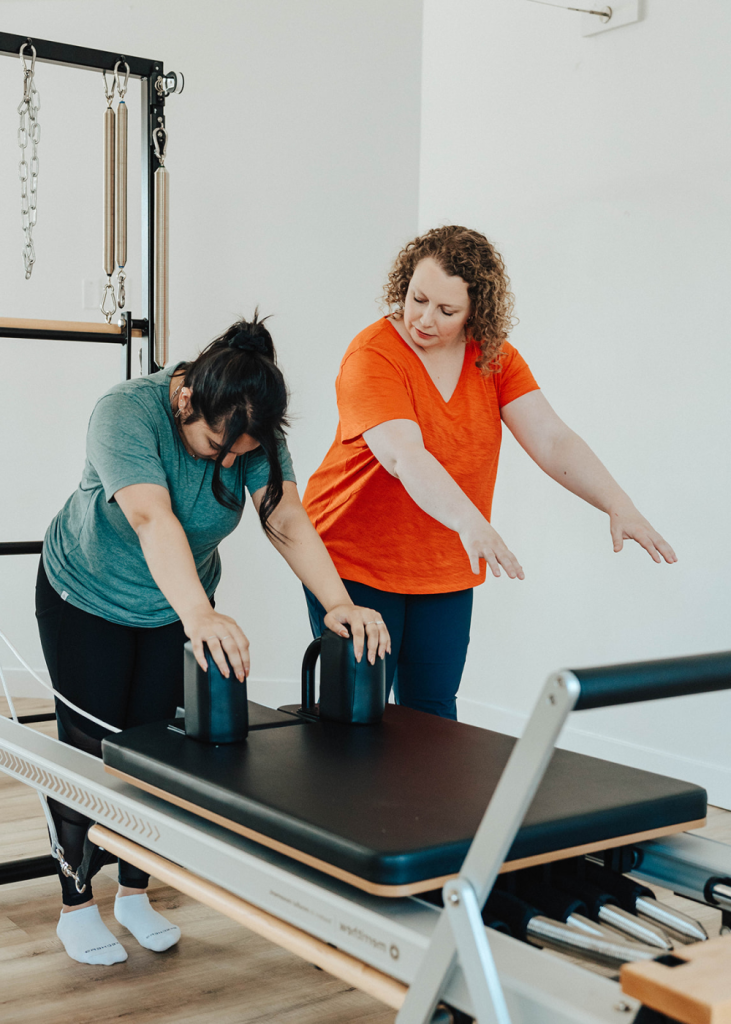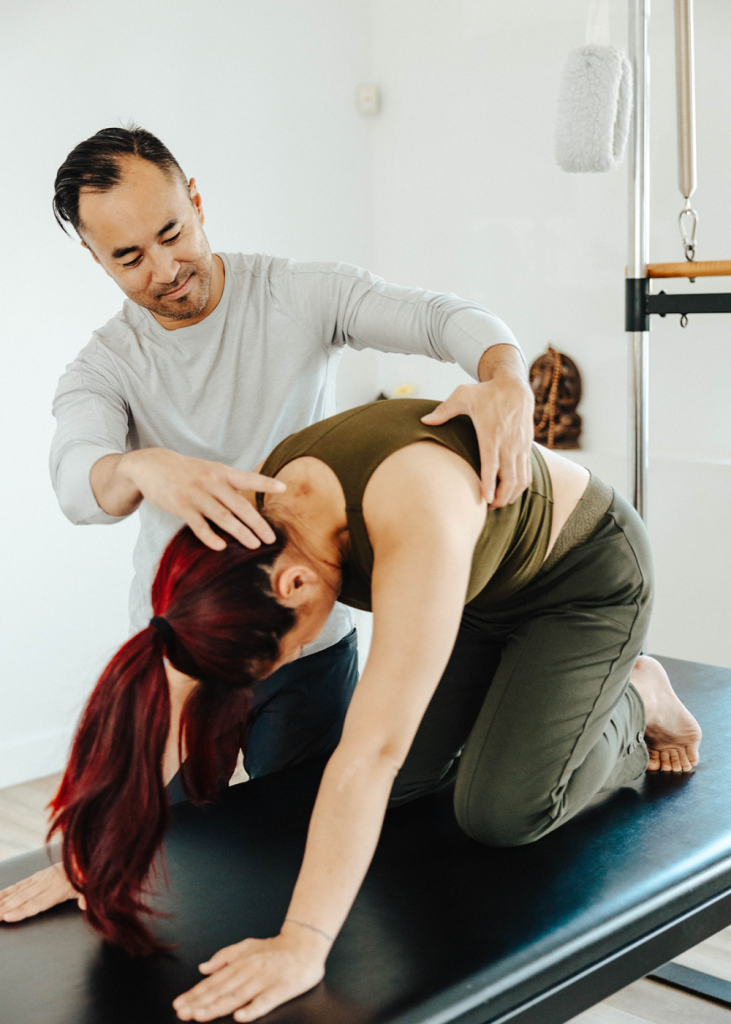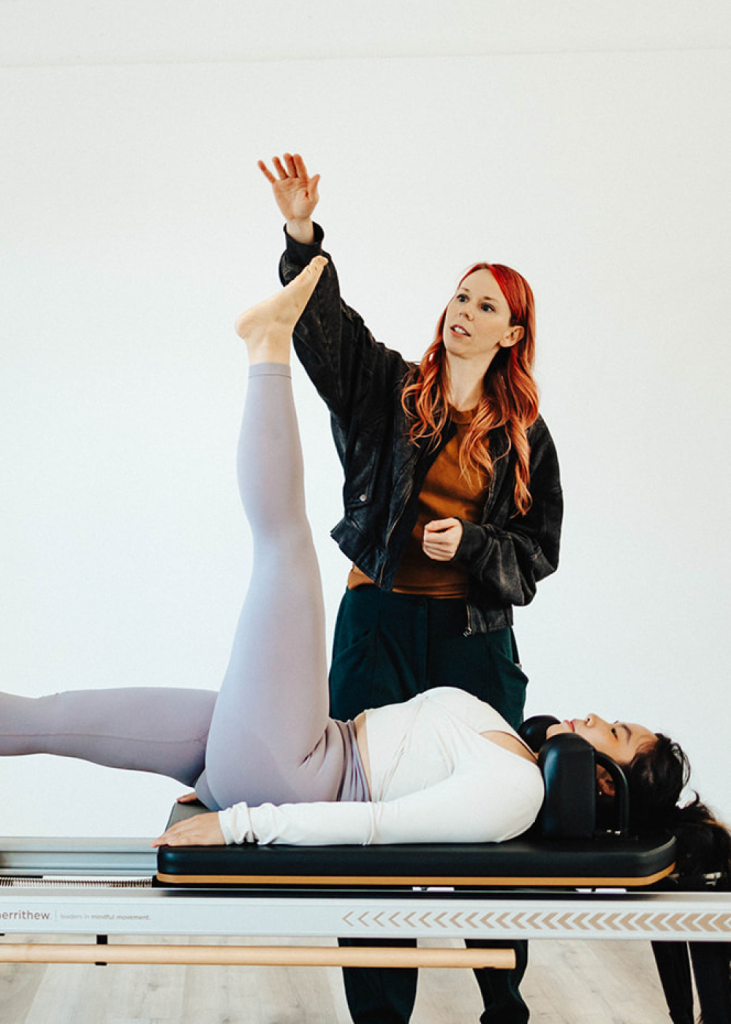Clinical Pilates in Vancouver
How physiotherapy uses Pilates for rehab
What is clinical pilates
At Embodied, we use Clinical Pilates as part of a broader approach to recovery. It’s not about fixing you—it’s about working with the body you have today, and helping it feel more supported, more capable, and more adaptable.
Clinical Pilates is just one tool that we use to support you on your pain journey. Your session is always individualized—grounded in what’s going on in your body and guided by a clinical lens.
Clinical Pilates can be delivered by a physiotherapist or by a Clinical Pilates instructor with training in working with pain and injury. What makes it clinical is the reasoning behind it—the process of figuring out what’s most likely to help you, based on your history, how you’re moving, and where you’re trying to go.



What a Clinical Pilates session actually looks like
Expect a one-on-one session, so there’s time and space to understand what’s going on for you—your story, how your body feels today, and what’s showing up when you try to move.
We use a variety of supports to help you feel more at ease in movement. That might include tactile (hands on) guidance (with consent), props to give you a sense of support or feedback, and imagery to shift how you’re thinking about the movement—so your body has the chance to respond differently. It’s not just about doing the exercise—it’s about understanding how it’s working for you. Our goal isn’t to force control of movement, but to help your nervous system settle enough that new patterns of control can emerge naturally, over time.
Why choose Embodied for your Clinical Pilates
People often come to us after trying a few things that haven’t quite landed. You might be dealing with long-standing pain, moving differently after an injury, or just sensing that your body isn’t responding the way it used to. You don’t need a diagnosis to know something feels off—and you don’t need to have it all figured out before you come in to see us.
Our sessions offer structure, but also space to slow down, explore, and shift how movement feels—physically and emotionally. Whether you’re looking to reduce pain, reconnect with movement, or rebuild after injury, we’re here to walk with you through that process.
FAQs
1. What is Pilates?
Joseph Pilates developed a form of exercise called Contrology in the early 20th century. His approach combined elements from yoga, gymnastics, and martial arts, with a focus on building strength, flexibility, and control.
During World War I, he worked with injured soldiers using resistance exercises—an approach that later inspired the spring systems used on Pilates equipment like the Reformer. After moving to New York in the 1920s, he opened a studio that attracted dancers, athletes, and others looking to improve their movement and physical resilience.
Since then, Pilates has evolved into many different styles, each with its own interpretation of how exercises “should” be performed. Classical Pilates aims to stay close to how Joe intended the method to be practiced—though even that’s open to debate within the Pilates community.
2. What is Clinical Pilates?
Clinical Pilates is a little different. It involves a clinician—like a physiotherapist or Clinical Pilates instructor—using Pilates exercises as part of a therapeutic process.
It’s often used to support recovery from injury, manage persistent pain, or help people return to movement when traditional exercise feels too overwhelming. The focus is on what’s most useful for you, with exercises tailored to your symptoms, goals, and overall function.
3. Do I need to have Pilates experience to start?
Not at all. We’ll guide you through everything, and your movement plan will be tailored to what feels accessible and appropriate for you. You don’t need to be flexible, coordinated, or familiar with the equipment—we’ll meet you where you’re at.
4. What should I wear to a session?
Wear something you feel comfortable moving in. Stretchy or non-restrictive clothes are great. You don’t need shoes—most people go barefoot or wear grip socks.
5. Is Clinical Pilates covered by insurance?
Sessions with a physiotherapist are covered under physiotherapy.
Sessions with a Clinical Pilates instructor may also be covered when they’re part of what we call Collaborative Care—where your physiotherapist supervises and directs your treatment plan. This includes regular reassessments (usually every 4–6 sessions) to make sure things are progressing in the right direction. To check if you’re eligible, look for coverage under PTSW (Physiotherapy Support Worker) or PTA (Physiotherapy Assistant) in your plan. And if you’re not sure where to look, feel free to reach out—we’re happy to help.
We’re here to support you on your chronic pain journey- support that meets you where you are?
Whether you’re managing chronic pain, recovering from surgery, or simply looking to move better, our sessions at Embodied Physiotherapy and Pilates are designed with you in mind. From Clinical Pilates to hands-on physiotherapy, we’re here to support your goals, one step at a time.